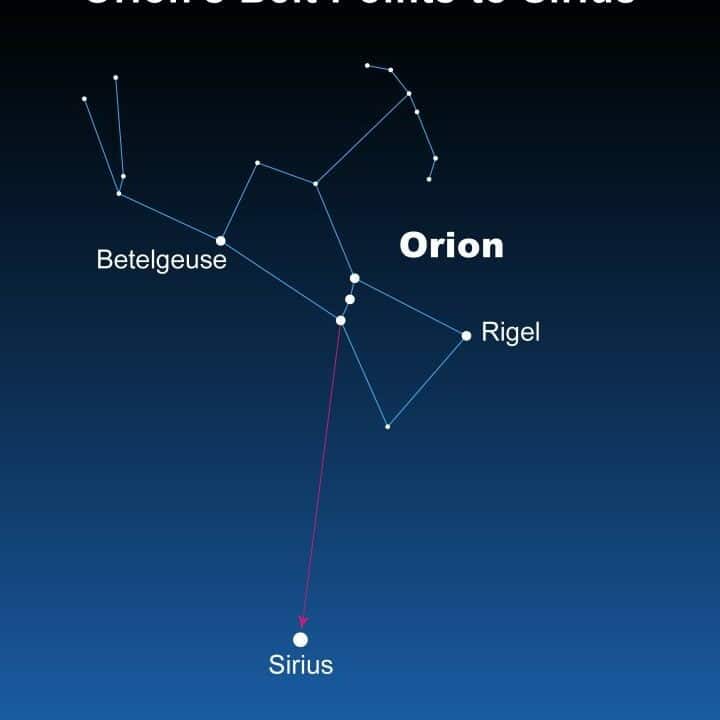The field of astronomy has divided the entire expanse of the sky into distinct regions known as constellations. Each of these sections contains numerous stars, ranging from a few dozen to several hundred. In ancient times, these constellations were simplified by assigning them different shapes, resulting in drawings that vaguely resembled earthly creatures. This gave rise to constellations such as Peacock, Crane, and Goldfish. Currently, there are 47 constellations in the Northern Hemisphere and 41 in the Southern Hemisphere. The brightest star in the northern sky is believed to be located within the constellation of Canis Major, also known as the Great Dog in Latin.
The Big Dog constellation
When we connect all the stars in the Big Dog constellation, we can see a pattern that resembles a dog. There are a total of 148 stars in this constellation, but only 80 of them are visible to us. The most prominent star in the constellation is Sirius, which emits a bluish glow that makes it hard to miss. It’s worth mentioning that Sirius is not only the brightest star in the constellation, but also in the entire night sky above Earth. That’s why people have been fascinated by it for thousands of years.


It is observable from both the Northern and Southern hemispheres of our planet. This is because it is in close proximity to our solar system. Only Alpha Centauri, Wolf 359, Bernard’s Star, and the red dwarf Lalande are closer than Sirius.
The distance between the Sun and Sirius is 8.64 light-years. In terms of the position of other stars in the Milky Way, this distance is considered insignificant. With the exception of the largest planets in our system, this luminous star is the most prominent in the celestial sphere.
Sirius
Up until the mid-1800s, it was commonly thought that Sirius was the only star in the sky. However, in 1844, a new theory emerged suggesting the presence of a hidden companion near Sirius that couldn’t be seen with the naked eye. This hypothesis was proposed by German astronomer Friedrich Wilhelm Bessel, who based his ideas on the principles of celestial motion and the trajectory of deflection.

According to Friedrich’s perspective, the hidden entity known as Sirius rotates in a similar fashion, with one rotation taking place every fifty years. However, his hypothesis faced opposition from other esteemed astronomers due to the lack of empirical evidence. Friedrich was unable to substantiate his claims during his lifetime. It was only sixteen years later in America that Alvan Graham Clark, the inventor of the telescope, observed another celestial body nearby this brilliant star in the sky. This discovery led to the observation of Sirius and eventually confirmed the German astronomer’s theory.
After a short period of time, astronomers were able to comprehend the reason behind Sirius’ peculiar orbit. The cause lies in the vicinity of another star, which has been named Sirius B. This star is classified as a white dwarf, where no thermonuclear reactions occur. Additionally, it is intriguing to note that the mass of Sirius B is equivalent to that of the Sun, despite its significantly smaller size. As a result, other stars are drawn towards Sirius B, causing them to revolve along a specific trajectory. The impact of Sirius B extends even to Sirius A, the most prominent star in the sky.
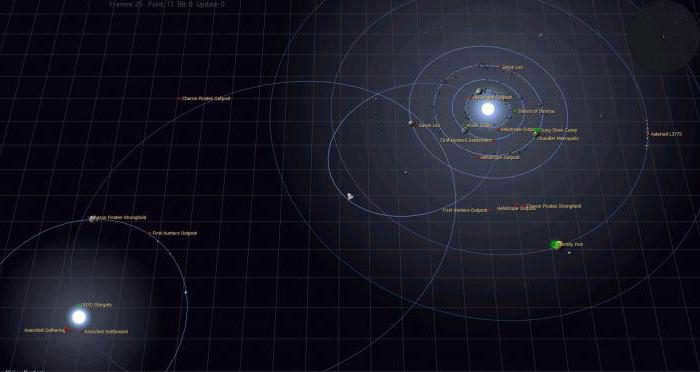

Sirius B was the initial white dwarf to possess such a massive mass. Scientists have determined that these stars are roughly three hundred million years old. There is a hypothesis that when Sirius was initially formed, it consisted of two objects, one of which was five times larger in mass than our luminary, while the other was twice as large. The first luminary consumed itself, transforming into the Sirius B that is visible to us with a smaller diameter and greater mass. Sirius A has maintained its characteristics, allowing people to marvel at its brilliance for over a millennium.
The crimson illumination of Sirius
In bygone eras, numerous intellectuals also witnessed Sirius, yet an incredibly peculiar trend emerged from their observations: they all detected a scarlet radiance emanating from the luminous celestial body positioned to the south. The esteemed Roman philosopher Lucius Annaeus Seneca referred to it as a brilliant crimson star. This identical luminescence was observed by Claudius Ptolemy in the 4th century BC.
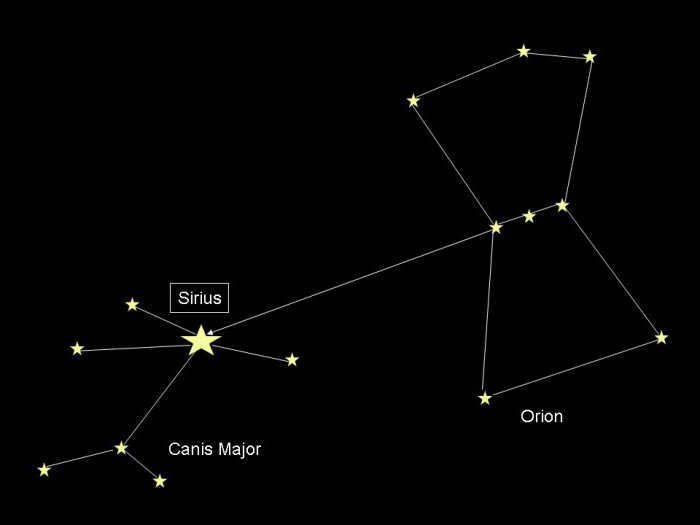

It could be inferred that the hue of the star was altered due to the hemisphere in which the observers were situated. However, there are also historical accounts in Chinese astronomy of a crimson star witnessed by the scientist Sima Qian. Nearly all ancient cultures documented such an extraordinary phenomenon. Astronomical scholars postulated that relatively recently (in celestial terms), a brilliant star in the nocturnal firmament exhibited a reddish tint.
However, the official scientific consensus contradicts this claim entirely. Scientists contend that significant changes to Sirius could not have occurred in such a brief span of time. According to contemporary researchers, individuals from that era may have simply sought to enhance their observations by incorporating vivid epithets into their descriptions. Moreover, if one were to observe Sirius in the evening and morning, they would likely notice its shimmering effect, which distorts its true luminosity.
Sirius Devotion
In order to grasp the significance of the doctrines and sects formed around the veneration of this celestial body, one must consider not only its enduring visibility from every corner of the globe throughout centuries, but also its association with a particular constellation. For instance, the Sumerians referred to it as the Arrow, attributing its existence to the god Ninurta. On the other hand, the Egyptians regarded this star as a manifestation of the goddess Soptet.
Egypt
Take a look at this star that caught the attention of Egyptian astronomers. Interestingly, they relied on it to predict the flooding of the Nile. They believed that the tears shed by the goddess Isis mourning her husband, Osiris, the god of agriculture, caused this natural phenomenon. Additionally, in ancient Egypt, they measured the passing of time based on Sirius rather than the Sun.
Greece
However, according to Greek mythology, the term “Sirius” is equivalently described as “shining”. It was firmly believed by the ancient Greeks that the most radiant celestial body visible in the month of January was the renowned Canis Major, also known as the Great Hound of Orion. Greek mythology further suggests that this faithful canine was in pursuit of the Pleiades, relentlessly hunted by Osiris, while fiercely chasing after the elusive Hare.
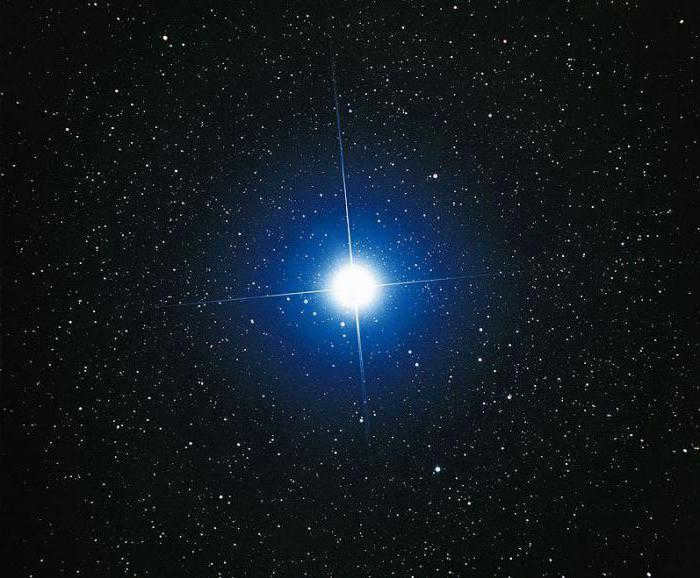
In Latin, the star known as Canicula was given the name “little dog.” The days when Sirius was most prominent were regarded as the days of this particular star. During these days, it was challenging to accomplish anything as they were the hottest days of the year.
Simultaneously, the native inhabitants of New Zealand revered Sirius as the embodiment of the deity Rehua, residing in the celestial realm.
Dogons
The Dogon tribe is renowned for their enigmatic worship of the star Sirius. While modern science has only recently discovered Sirius B, the Dogon have long been aware of its existence. It is remarkable that the Dogon possess this knowledge, considering their primitive lifestyle and limited understanding of the world.


It is important to mention that the tribal calendar is based on a fifty-year cycle that corresponds to the orbital period of the white dwarf around the prominent star Sirius A. Observing this star without any equipment is impossible, and the Dogon tribe lacks even basic tools for sky observation.
The most brilliant celestial body in the firmament is known as Sirius. It is visible from both the Southern and Northern Hemispheres. This particular star has been under close scrutiny for a considerable period of time, and researchers have finally determined that it is a member of the constellation Canis Major, more commonly referred to as the Big Dog. Many experts believe that Sirius is the second most significant entity for our planet, surpassed only by the Sun. As of yet, a multitude of information and legends surrounding Sirius remain enigmatic to contemporary science. Consequently, there is a great deal of curiosity surrounding the true nature and significance of this star, which appears to be so intimately connected to our own existence.
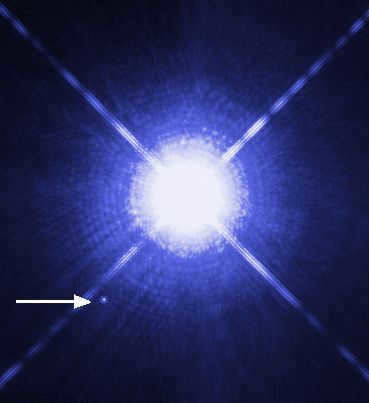
Sirius is the name of a star located in the constellation known as the Big Dog. It is recognized as the brightest star in the night sky. With an apparent sidereal magnitude of 1.46, Sirius shines nearly twice as brightly as Canopus, which is the second brightest star visible from Earth. In addition to its luminosity, Sirius is also noteworthy for its proximity to our solar system, as it is located a mere 8.6 light-years away [1].
To the naked eye, Sirius appears as a solitary star, but in reality, it is a binary star system. This system consists of a primary white star classified as Sirius A, and a secondary white dwarf companion known as Sirius B. Sirius A is approximately twice as massive as the Sun and an astonishing 22 times brighter [1].
The age of the Sirius system is estimated to be around 200-300 million years. Initially, it comprised of a pair of vibrant blue stars. The larger star, known as Sirius B, eventually depleted its fuel and underwent a series of transformations, first expanding into a red giant and shedding its outer layers, and then contracting into a white dwarf, its current state. This final transformation occurred approximately 120 million years ago.
The star Sirius held great importance in numerous ancient cultures, with a plethora of myths and legends surrounding it. In fact, it is second only to the Sun in terms of the number of myths associated with it [2].
Observation
Sirius is the most luminous star in the night sky, boasting an apparent magnitude of 1.46. It outshines all other stars, including the second brightest star, Canopus, by nearly double the brightness. When observed from our planet, Sirius consistently appears less radiant than Venus and Jupiter, and occasionally less bright than Mars and Mercury as well. This remarkable celestial body can be seen from virtually any location on Earth[3].
Star System Structure
The Sirius star system is composed of a unique pair of stars that revolve around each other at a distance equivalent to 20 astronomical units, which is approximately the same as the distance between the Sun and Uranus. This orbital dance takes place over a span of 50.1 years.
One of the stars, known as Sirius A, is classified as a main-sequence star with a spectral class of A. It boasts an estimated surface temperature of 9940 K. Its partner, Sirius B, has already progressed beyond the main sequence and evolved into a white dwarf. In the visible spectrum, Sirius B is now approximately 10,000 times less luminous than it used to be. Interestingly, it was once the more massive of the two stars. Scientists estimate that this star system is around 230 million years old. During its early stages, both stars were likely blue-white in color and completed a lap around each other in an elliptical orbit every 9.1 years[6].
The system is emitting a higher amount of infrared radiation than anticipated. This could suggest the presence of dust within the system, which is relatively uncommon for a binary star. Data obtained from the Chandra Space Telescope demonstrates that Sirius B emits a greater amount of X-ray radiation compared to Sirius A. A study conducted in 2015 discovered evidence of massive planets within the system that are 11 times the size of Jupiter and located at a distance of 0.5 astronomical units from Sirius A. Additionally, these planets are 6-7 times the size of Jupiter when positioned 1-2 astronomical units away from the star, and approximately 4 times the size of Jupiter when located 10 astronomical units from the star.
Sirius A is a star that has a mass equivalent to two times the mass of the Sun. Scientists have used an astronomical interferometer to measure the star’s radius, and they have found that its angular diameter is approximately 5.936 ± 0.016 milliseconds of arc. While Sirius A has a relatively low predicted rotational velocity of 16 km/s, this speed is not significant enough to cause flattening of the star’s disk. In contrast, another star called Vega, which has similar dimensions, rotates much faster at a velocity of 274 km/s, resulting in flattening at its equator.[7]
On the surface of Sirius A, scientists have detected a faint magnetic field. According to stellar models, this star was formed when a dense cloud of gas and dust collapsed in on itself. After around 10 million years, the star’s internal energy production shifted entirely to nuclear reactions. At this point, the star’s core became convective and started utilizing the CNO cycle to generate energy. Based on predictions, it is expected that Sirius A will exhaust all of the hydrogen in its core approximately one billion years after its formation. Once this depletion occurs, the star will undergo a transformation into a red giant before ultimately shrinking down to a white dwarf[8].
About 120 million years ago, an event occurred in Sirius B. At that time, the star had a mass of approximately 5 solar masses and was classified as B4-5 while it was still on the main sequence. The majority of the star is composed of a combination of carbon and oxygen, which was created through the fusion of helium. Positioned above this mixture is a layer of lighter elements, with the substances arranged according to their mass due to the star’s high surface gravity. As a result of this gravity, the outer atmosphere of Sirius B is primarily composed of hydrogen, the lightest element, and no other elements can be detected in the star’s spectrum[10].
Notes
- ↑ 1.01.1SIRIUS – Large Russian Encyclopedia – electronic version(unpublished). old.bigenc.ru. Date of publication: March 31, 2023.
- ↑Sergey Brushinkin.Sirius – a key to deciphering the myths of the Egyptians, Aryans and Dogon. – Litres, 2022-05-15. – 60 p. – ISBN 978-5-457-18209-7.
- ↑redhotfox.The most brilliant stars of the night sky(Russian).. Date of publication: March 31, 2023.
- ↑John C. Barentine.Uncharted Constellations: Asterisms, Single-Source and Rebrands. – Springer, 2016-04-04. – 227 p. – ISBN 978-3-3-319-27619-9.
- ↑Yuri.Voyager’s journey beyond the boundaries of our Solar System(Russian)(unpublished)?. The Universe of Astronomy (June 13, 2017). Date of publication: March 31, 2023.
- ↑ Sirius star – overview, characteristics, background, and fascinating details(Russian). . Date of publication: March 31, 2023.
- ↑F. Royer, M. Gerbaldi, R. Faraggiana, A. E. Gómez.Rotational speeds of A-type stars – I. Measurement of in the southern hemisphere(English). // Astronomy & Astrophysics. – 2002-01-01. – Vol. 381 , iss. 1 . – P. 105-121 . – ISSN1432-0746 0004-6361, 1432-0746. — doi:10.1051/0004-6361:20011422.
- ↑P. Kervella, F. Thévenin, P. Morel, P. Bordé, E. Di Folco.The interferometric diameter and internal structure of Sirius A(English) // Astronomy & Astrophysics. – 2003-09-01. – Vol. 408 , iss. 2 . – P. 681-688 . – ISSN1432-0746 0004-6361, 1432-0746. — doi:10.1051/0004-6361:20030994.
- ↑M. A. Barstow, Howard E. Bond, J. B. Holberg, M. R. Burleigh, I. Hubeny, D. Koester.Hubble Space Telescope spectroscopy of the Balmer lines in Sirius B⋆(unpublished). . academic.oup.com.. Date of publication: March 31, 2023.
- ↑D. Koester, G. Chanmugam.Physics of white dwarf stars(English) // Reports on Progress in Physics. – 1990-07. – Vol. 53 , iss. 7 . – P. 837 . – ISSN0034-4885. — doi:10.1088/0034-4885/53/7/001.
This article is considered “complete.” The fact that it is complete does not necessarily mean that it is of high quality, but it does mean that it has adequately addressed the main topic. If you would like to enhance the article, feel free to make edits!
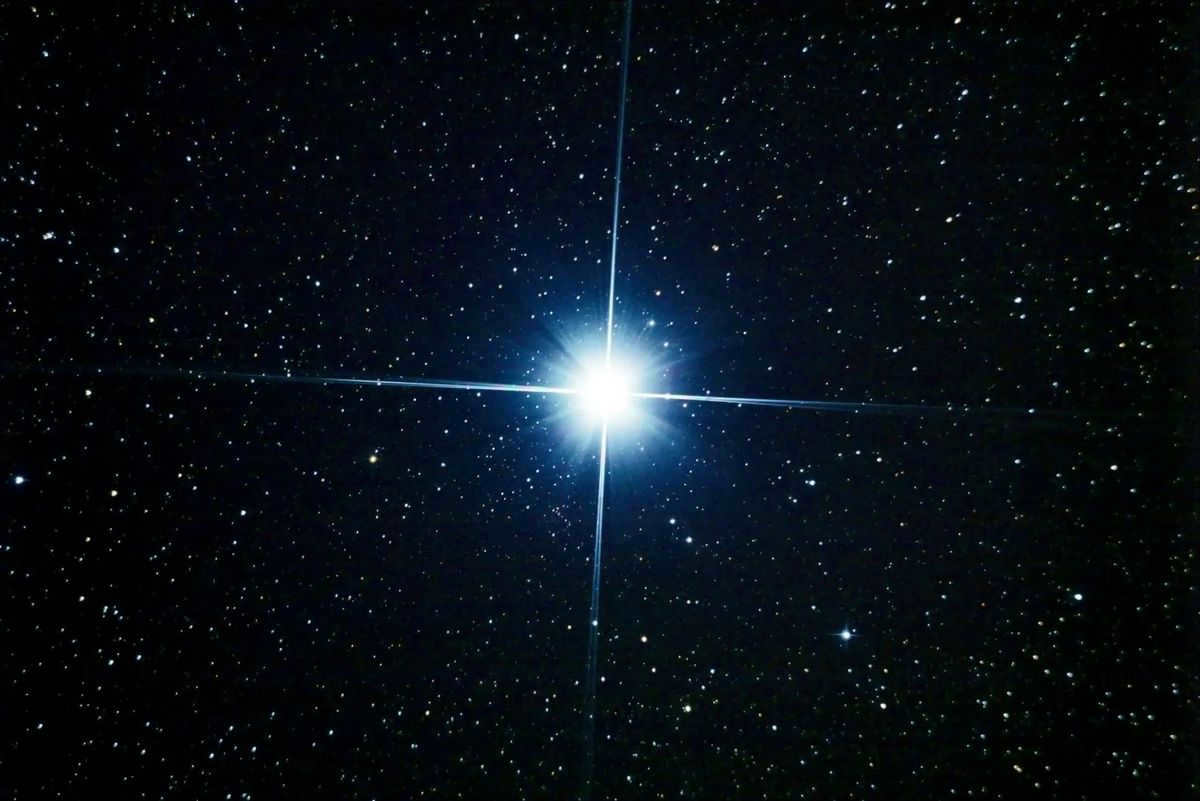
Hello there, esteemed readers of Interessno.ru. The constellation known as Canis Major is home to the most brilliant star visible in the night sky, Sirius. Situated 8.6 light-years away from our planet, this blue-white celestial body emits a whopping 20 times more energy than our very own Sun. Additionally, Sirius A is accompanied by a companion star, the white dwarf Sirius B.
However, there is much more captivating information to share about this particular star. Hence, we have prepared an entire article for your perusal, encompassing the most intriguing facts about Sirius. We sincerely hope that this publication will captivate not only the younger audience but also the more mature readership.
The star is named after the Greek word “Σείριος”, which means “scorching”, “bright”, “brilliant”, describing its characteristics.
Number 2
It is not the most luminous astronomical object visible in the night sky from Earth. Apart from the Sun and the Moon (which are more visible and brighter, respectively), Venus and Jupiter shine brighter than Sirius. The same applies to Mercury and Mars, depending on their orbital positions relative to our planet. However, among all the actual stars (excluding the Sun), Sirius is the brightest star in the sky. It shines nearly twice as bright as the second brightest star Canopus, which is actually much brighter than Sirius but farther away from Earth.
Number 3
In contrast to our Sun, this particular star is not solitary. It belongs to a binary system, and its partner is a minuscule (even tinier than Earth), white dwarf named Sirius B, or more commonly referred to as “Puppy”.
Despite having a mass of approximately 0.98 solar masses, which is nearly equivalent to the Sun’s mass, “Puppy” is even smaller in size compared to Earth. And as we are aware, the Earth is roughly 109 times smaller than the Sun. This renders Puppy an incredibly compact white dwarf.
№4
In the 7th century, the ancient Greek poet Hesiod first mentioned it in his didactic poem “Labors and Days”:
Sirius makes his way over the heads of mortals destined to perish.
Sirius makes his way, but it is more visible in the nocturnal sky…..
№5
With over 50 names and designations, this celestial object has a rich history. During the medieval era in Western Europe, it was often referred to as Alhabor in astrolabes. This name was famously used by Geoffrey Chaucer, the English poet and astronomer, in his renowned work “Treatise on the Astrolabe.”
In the Scandinavian countries, it had a different name: “Loki’s torch” or “Lokabrna.”
In 1868, there was a misconception by amateur astronomer Sir William Heggins that Sirius was moving away from the solar system at a velocity of approximately 40 km/s. However, it has been discovered that this assumption was incorrect. In reality, Sirius is actually moving at a slower pace and is not moving away from the solar system, but rather towards it. The accurate speed at which Sirius is traveling towards the solar system is 7.6 kilometers per second.
№7
There has been a long-standing debate among scientists regarding the color of this object. Numerous ancient sources have described it as having a red hue. The Greek astronomer Ptolemy, along with many other scientists, characterized its appearance as reddish. Around 150 AD, he compared the color of this star to five other stars: Antares in the Scorpius constellation (which is a red supergiant), Arcturus in the Volopassus constellation (which is an orange giant), Betelgeuse in the Orion constellation (which is a red supergiant), Aldebaran in the Taurus constellation (which is an orange giant), and Pollux in the Gemini constellation (which is an orange giant).
However, contrary to these descriptions, Sirius is actually not red in color, but rather has a bluish-white hue.
№8
Today, the size and brightness of Sirius A, also known as the “Dog Star,” surpasses that of its eternal companion, affectionately called “Puppy.” The reason for this is that Sirius A is classified as a main sequence star, which means it is still active and “alive.” On the other hand, Sirius B has evolved into a white dwarf, becoming smaller and significantly dimmer than its sibling. However, in the distant past, billions of years ago, when the Puppy was in its prime, it was larger and emitted a much more brilliant light than its brother.
№9
It is extremely warm. Sirius A is characterized by a temperature of 10,500 degrees Kelvin, which is equivalent to 10,226 degrees Celsius. In comparison, its smaller sibling is even more scorching. Its surface temperature soars to 25,000 degrees Kelvin, or 24,726 degrees Celsius. In contrast, the surface temperature of the Sun is a mere 5,780 degrees Kelvin, or 5,506 degrees Celsius.
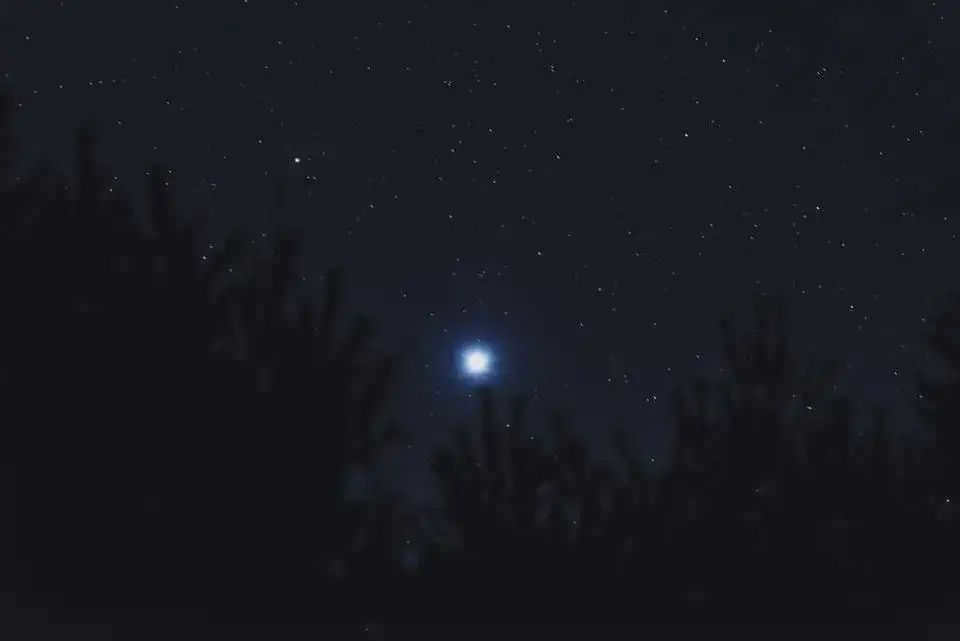
Sirius B has an extremely strong gravitational force. It is more powerful than that of Earth by a factor of approximately 350,000. For instance, if we were to place a regular cube of refined sugar on Sirius B, its weight would be around 1,000 kilograms in Earth’s gravity.
№11
In terms of astronomical time, Sirius B is considered a very young star. Scientists estimate that it is only 200-300 million years old. To put this into perspective, let’s compare it to other celestial bodies in our solar system. The Sun, for example, is approximately 4.6 billion years old, as is our planet Earth.
№12
It can be observed from the majority of locations on our planet. The only places where it is not visible are the far northern latitudes. In those regions, it does not reach a significant height above the horizon and can only be spotted during the winter season.
Individuals residing in southern areas have the opportunity to observe it in the nighttime sky for the majority of the year.
№13
The most convenient method of locating it in the night sky is by searching for it outside the Big Dog constellation, where it is typically found, and instead using the orientation of Orion’s Belt. In this constellation, there are three stars that serve as reliable indicators. These stars are Alnilam, Alnitak, and Mintaka. Simply trace a line downwards through these three celestial objects, and it will direct you towards Sirius.
№14
Scientists propose that within 1 billion years of its creation, Sirius A will deplete its hydrogen reserves entirely. It will encounter the same destiny as its younger counterpart, Puppy. In other words, it will initially transform into a red giant and subsequently transition into a white dwarf.
Sirius B lacks an internal heat source and will eventually cool down, releasing all of its heat to its surroundings.
That concludes our update for now, esteemed readers. We trust that our article has been both captivating and informative.
Blogger and the primary writer for Interessno.ru. Ever since I was a child, I have had a passion for devouring books and exploring various sources of knowledge. I hold two advanced degrees. Currently, alongside managing this online platform (as well as a few others), I also work as a college professor.
I actively engage in sports and prioritize a well-balanced lifestyle. I am perpetually ready to lend a hand and eager to connect with others. Feel free to reach out to me via the email provided in the footer (bottom) of this website.


It is now known that Sirius consists of not just one star, but two. In the field of astronomy, they are commonly referred to as Sirius A and B. They orbit around a common center of mass, and it has been determined that their orbital period is approximately 50 years.
Based on scientific calculations, it is estimated that the age of the Sirius system is around 250 million years.
Sirius A
The star of spectral class A1 is responsible for Component A. It has a mass equivalent to 2 solar masses. It is worth noting that the luminosity is in a spherical shape. This is due to the fact that the star exhibits a low rotational speed projection of 16 km/sec along its axis. In the future, it is predicted that the star will evolve into a red giant and then into a white dwarf.
Studying Sirius A is incredibly fascinating. Its spectrum has been discovered to contain a significant amount of metals and other heavy elements.
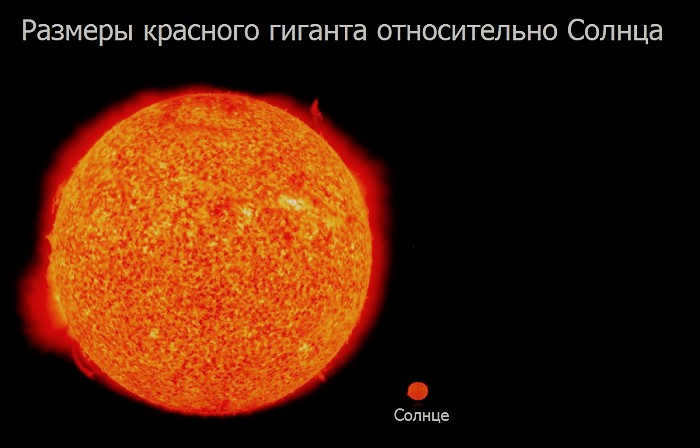

The red giant and the sun
Sirius B
This star has already transformed into a white dwarf. It has a mass equal to that of the sun, but its volume is a million times smaller and it is similar in size to our Earth.
It is worth noting that this celestial object is considered the most massive among white dwarfs.


The White Dwarf
In 1868, there was a misconception by amateur astronomer Sir William Heggins that Sirius was moving away from the solar system at a velocity of approximately 40 km/s. However, the reality is that the star is actually moving at a slower pace and in the opposite direction – towards the solar system. Sirius is currently approaching the solar system at a velocity of 7.6 km/s.
Actually, the Big Dog constellation is where Sirius can be found. It is recognized as the primary star of this constellation. Additionally, it holds the title of being both the Alpha star and the most luminous one in the entire constellation as well as the sky.
This star’s luminosity is directly linked to its close proximity to Earth.
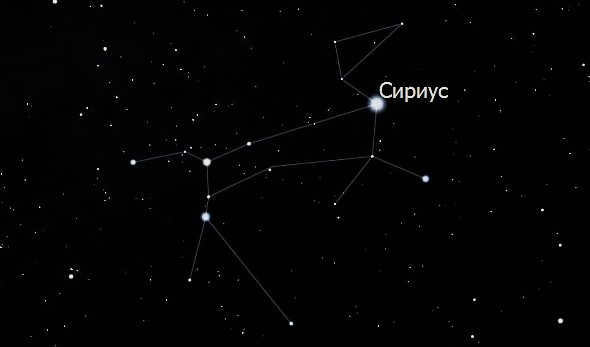

The constellation of Canis Major
According to astronomers, the brightness of the constellation of Canis Major will continue to increase as time goes on. This is because it is currently moving towards us. However, in approximately 60,000 years, its direction will reverse.
Speaking of movement, Sirius was one of the first stars to be observed with its own motion. Aldebaran and Arcturus also exhibit similar motion.
Furthermore, the trajectory of Sirius is not a straight line, but rather a curved path. Some might even describe it as undulating. This is due to the presence of hidden mass in the vicinity, which in turn affects its rotation around the center.
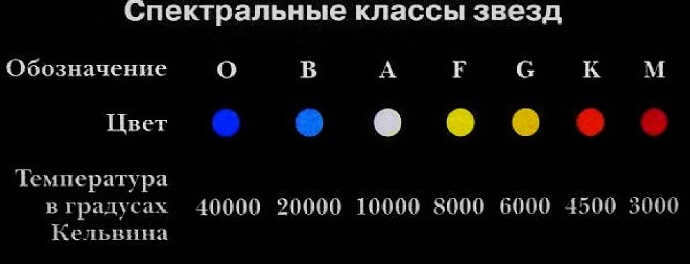

Spectral classification of stars
Characterization and facts
Sirius, along with Betelgeuse and Procyon, forms the Winter Triangle asterism. Within this asterism, it represents a peak.
Furthermore, it belongs to the Sirius supergroup, which happens to be one of the largest star clusters. Within this cluster, there are:
- Beta Ascendant
- Beta Cups
- Beta Eridani
- Serpent Beta
- Northern Crown
The luminary has multiple designations, likely due to its ancient age. References to it can be traced back to the 7th century.
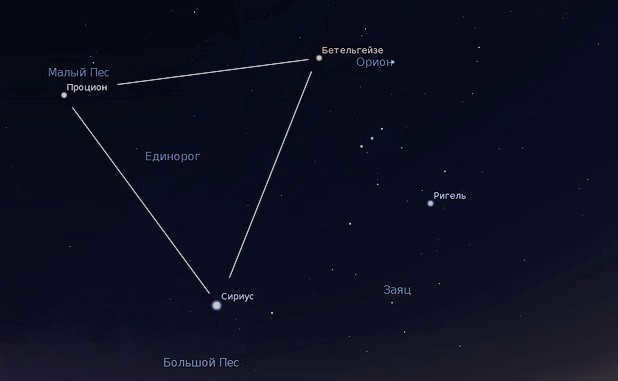

What is the conclusion? To sum up, Sirius:
- Is a star that belongs to the main sequence;
- Is an astronomical object that is part of the constellation of Canis Major;
- Is the brightest star in the constellation;
- Is one of the brightest stars in the universe;
- Is the closest star system to the solar system;
- Has a spectral class of A1;
- Is a double star;
- Has an apparent magnitude of 1.46;
- Has an absolute magnitude of 1.4;
- Has a declination of -16° 42′ 58.017″;
- Has its own mechanism;
The weather is extremely hot. The temperature of Sirius A is 10,500 degrees Kelvin, or 10,226 degrees Celsius. Speaking of its smaller sibling, it is even colder. Its surface temperature reaches 25,000 degrees Kelvin, or 24,726 degrees Celsius. As for the surface temperature of the Sun, it is only 5,780 degrees Kelvin, or 5,506 degrees Celsius.
In astronomical terms, this star is considered very young. According to initial estimates from scientists, it is approximately 200-300 million years old. To give you a sense of its youth, let’s compare it to other objects in our solar system. For instance, the Sun is about 4.6 billion years old. Similarly, our planet Earth is also 4.6 billion years old.
In Nordic nations, this celestial body was known as “Loki’s beacon” or “Lokabrna”.
Sirius in folklore and societal beliefs
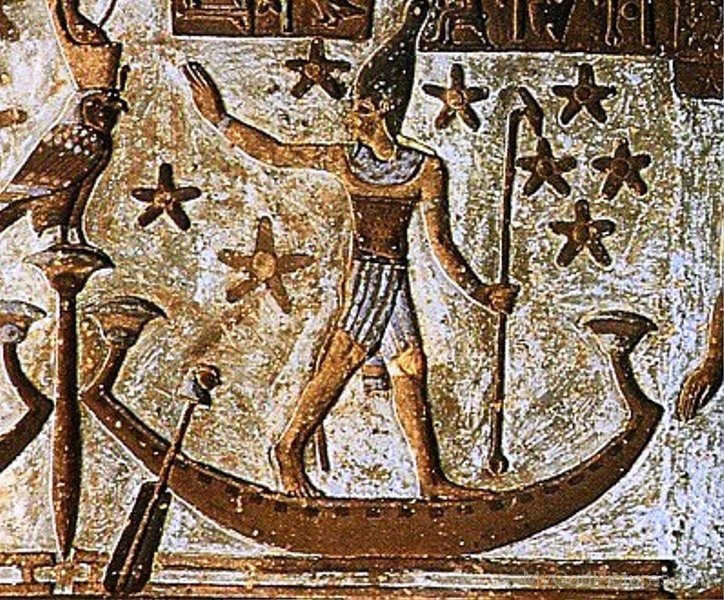
In ancient times, the people of Egypt referred to Sirius as Soldet, which was represented by a hieroglyph depicting a star and a triangle. The significance of this star was so great that it even influenced the creation of a calendar based on its rising. When Sirius appeared on the horizon, it marked the beginning of a new year for the Egyptians, who would then celebrate in honor of this celestial body. Interestingly, the disappearance of Sirius before dawn also had a practical effect on the Nile River. As Sirius vanished from the sky, it signaled the receding of the river from the coast, a phenomenon that typically occurred shortly before the summer solstice.
The star was not visible for a period of 70 days, leading to the belief that during this time Isis and Osiris resided in the underworld. The ancient Egyptians observed that the heliacal rising of Sirius occurred every 365.25 days. They regarded Sirius as the gateway to the afterlife and took care not to bury the deceased during the 70-day period when the star was absent from the sky. Some speculate that the construction of the Great Pyramid of Giza was precisely aligned with the positions of Sirius and the three stars of Orion’s belt.
The ancient Greeks recognized that the appearance of Sirius marked the arrival of a warm season. In various texts, it is referred to as being “burning” in nature. Some even offered sacrifices to the star and considered it a symbol of good fortune. Conversely, if Sirius appeared hazy and faint, it was believed to bring death and outbreaks of epidemics.
The Romans observed the ascension of the constellation on April 25th and made offerings of dogs and sheep. It is interesting to note that the association with dogs is found in various cultures. However, in Chinese culture, it was revered as the “celestial wolf”. The Polynesians referred to it as Manu’s “great bird” and relied on it for navigation. Among the Maori, its presence signaled the arrival of winter, while for the Hawaiians it indicated the presence of the Queen of Heaven.
In India, it was known as Swana and served as Prince Yudhisthir’s loyal dog. Together, they embarked on a journey to find the gates of heaven. However, upon reaching their destination, they were denied entry for the dog. In a display of unwavering loyalty, Prince Yudhisthir chose to decline the opportunity to enter heaven without his faithful companion. Ultimately, the Lord allowed both of them to enter, but not before testing their loyalty.
The magnificent and radiant Sirius A currently possesses a significantly larger size and a more intense brightness in comparison to its everlasting companion, known as “Puppy”. This notable difference arises from the fact that Sirius A is classified as a main-sequence star, signifying its ongoing vitality. In contrast, Sirius B has transitioned into a white dwarf, resulting in its diminished stature in relation to its celestial sibling and a considerably diminished luminosity. Nevertheless, during the ancient epochs billions of years ago, when the “Baby” star was in its prime, it exceeded its sibling in size and emitted a substantially more brilliant radiance.
There has been much debate among scientists regarding the color of this object for a considerable period of time. Various ancient sources have described its color as being red. The Greek astronomer Ptolemy, along with numerous other scientists, described its appearance as having a reddish hue. Ptolemy specifically compared the red color of this celestial body to five other stars: Antares in the Scorpius constellation (which is a red supergiant), Arturo in the Bote constellation (an orange giant), Betelgeuse in the Orion constellation (a red supergiant), Aldebaran in the Taurus constellation (an orange giant), and Pollux in the Gemini constellation (an orange giant).
However, it should be noted that Sirius is not actually red in color, but rather bluish-white.
Main Characteristics
The star Sirius possesses a rather high luminosity of 1.47 magnitudes, making it the most brilliant star in the constellation of Canis Major. In the Northern Hemisphere, it is regarded as the apex of a triangle alongside Procyon and Betelgeuse. It emits a greater amount of light compared to Canopus, Alpha Centauri, or Rigel.
If you have the precise coordinates, you can locate Sirius in the night sky. It is most easily visible from the southern hemisphere, although people in the northern hemisphere still have a chance to observe the constellation, especially under favorable weather conditions.
Sirius is approaching planet Earth at a velocity of 7.6 km/s. As a result, its luminosity will gradually increase.
The next closest celestial body is currently Raccoon. The distance between these stars ranges from 5 to 5.5 light-years. The Sun is the sixth farthest from Sirius.
- Alpha Centauri.
- Raccoon.
- Leuten.
- Cancer.
- Eridana.
- Wolf 359.
- LHS1565.
- Capteina.
- The following centaurs.
To locate Sirius in the night sky, you need to align yourself with Orion’s belt. If you imagine a line going through it, you will find Aldebaran in the northwest and the desired star in the opposite direction.
When someone is not knowledgeable about finding the cardinal directions, locating Sirius requires knowledge of other stars in the Canis Major constellation:
In northern latitudes, the star is part of the Winter Triangle. Other vertices include Betelgeuse and Procyon.
Supergroup hypothesis
At one point, Sirius was believed to be a member of the mobile group of stars known as the Big Dipper. This group consists of 220 stars that follow a similar path through space and are roughly the same age.
Initially, this cluster was relatively open, but over time it lost its gravitational connection and eventually broke apart.
For a while, astronomers thought that most of the Big Dipper constellation was part of this cluster. However, they eventually realized that this was not the case. One key piece of evidence supporting this conclusion is the fact that Sirius is much younger than the mobile group and therefore cannot be a part of it.
Meanwhile, scientists have proposed that Sirius may be a member of the hypothetical supergroup known as Sirius. If this supergroup does indeed exist, it would be located approximately 500 light years away from our solar system.
The most straightforward method of locating Sirius in the night sky is by diverting one’s gaze from the Big Dog constellation, to which it pertains, and instead directing attention towards Orion’s belt. Within this celestial formation, there exist three stars that function as reliable indicators. These stars, namely Alnilam, Alnitak, and Mintaka, serve as useful pointers. By connecting these three astronomical entities with a line, one can accurately pinpoint the location of Sirius.
The simplest way to observe Sirius in the nocturnal expanse is to refrain from fixating on the Big Dog constellation, which it is associated with, and instead concentrate on the belt of Orion. Within this particular celestial arrangement, three stars, known as Alnilam, Alnitak, and Mintaka, can be utilized as navigational aids. By drawing an imaginary line through these three celestial objects, one will successfully identify the whereabouts of Sirius.
Where to Find Sirius?
If you want to locate Sirius in the sky, it’s not sufficient to just know when to look, but you also need to be aware of where to look.
During dawn, Sirius can be spotted in the southeast, then it gradually rises higher in the sky, moves across the southern part of the sky, and eventually sets in the southwest.
It’s important to note that Sirius doesn’t rise very high above the horizon in the Russian sky, so in urban areas, it is often obstructed by buildings and trees. In Murmansk and Arkhangelsk, it is only visible for a few hours and very low in the southern sky. In St. Petersburg and Moscow, Sirius can be seen at a higher altitude and for a longer duration. The best observation conditions for Sirius are in the Caucasus region.
The key reference point for locating Sirius is the constellation Orion, or more specifically, a section of Orion known as Orion’s Belt.
Orion’s Belt comprises three relatively bright stars in close proximity, appearing to be aligned in a straight line. What is noteworthy is that all three stars have a similar level of brightness, and the middle star is almost equidistant from the other two. Alongside four other stars that are even brighter, the Belt forms the distinct figure of Orion the Hunter, which is easily recognizable.
Now, here comes the key point. When the constellation Orion is situated in the southern sky, Orion’s Belt is tilted towards the horizon. If you were to extend a line connecting the stars of the belt to the horizon, it would lead you to a highly luminous star. And that star would be Sirius!
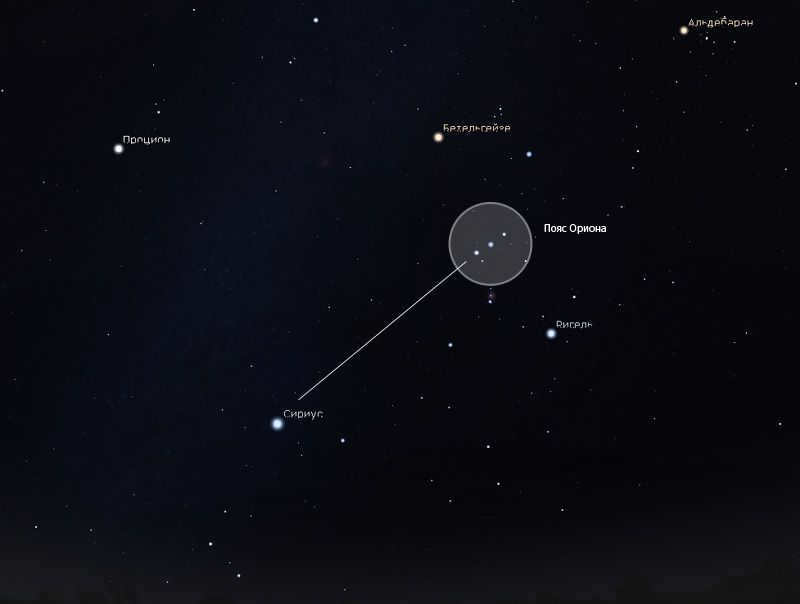

If you want to locate Sirius easily, a good starting point is to look at the three stars in Orion’s Belt.
During cold nights, Sirius often appears like a dazzling diamond, radiating with a multitude of vibrant colors. This is the first thing that captivates anyone who sees it for the first time. What sets Sirius apart from other stars is its shimmering, twinkling, and ever-changing colors!
Actually, during nights with turbulent atmospheric conditions, all stars emit different hues and shades; however, Sirius stands out more due to two reasons: a) it is significantly brighter and b) it is situated closer to the horizon. The contrast becomes even more apparent during those rare tranquil nights when the atmosphere settles down and Sirius emits a consistent, pure white light!

Connecting the stars with lines makes it much simpler to commit the constellations to memory, particularly the seven stars of Orion and the constellation of the Big Dog, which is associated with Sirius.
Therefore, the most straightforward method to locate Sirius is near the stars in Orion’s Belt. After a couple of practice sessions, this image – the constellation of Orion and Sirius – will become an essential aspect of your winter stargazing. Equipped with a pair of binoculars or a small telescope, you can already discover numerous fascinating elements within these two celestial objects, even if you don’t have a deep understanding of the night sky!
What is the process of locating Sirius in the night sky?
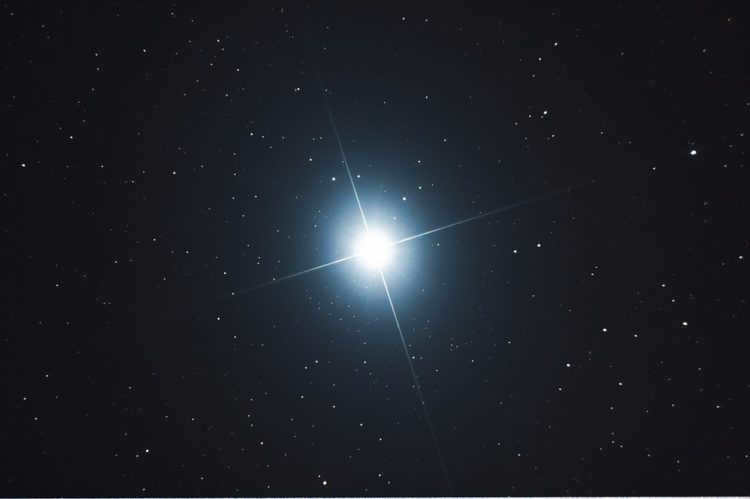
How to Spot Sirius
- In the central regions of our country, you can find Sirius in the southern part of the sky. During the fall, it becomes visible closer to the morning, while in the spring, Sirius appears after sunset. In the winter sky, it can be seen from sunrise to sunset, although it remains low, almost on the horizon.
- Despite being a star of the southern hemisphere, Sirius has a low declination, allowing it to be observed even in far northern cities like Norilsk, Murmansk, and Verkhoyansk, reaching up to 74 degrees north latitude. During the summer, it rises high enough above the horizon to be confidently observed, even in the sky near Petrozavodsk.
- To locate Sirius in the sky, you can easily use the constellation of Orion, which can be identified by three stars in a straight line known as Orion’s Belt. By mentally extending this line to the southeast, you will come across a bright star that stands out. This star is Sirius. In the opposite direction, to the northwest, you will find the star Aldebaran. However, Sirius can be distinguished from Aldebaran as it shines much brighter.
- If you have a good sense of direction and are familiar with the other stars, you can locate Sirius with their help. It is situated southwest of the star Procyon, 35 degrees north of Canopus, or 30 degrees south of Alchena (the third largest star in the constellation Gemini).
The Historical Importance of the Star Sirius
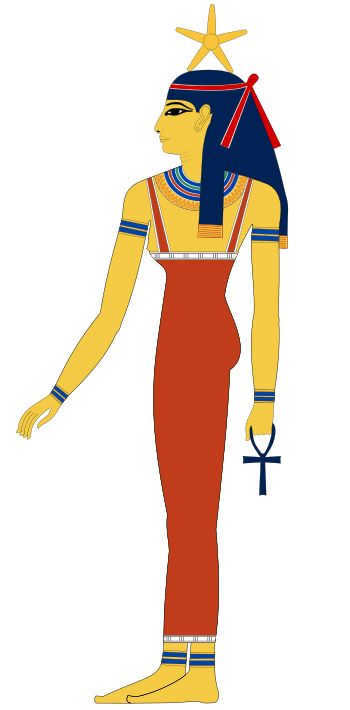
In India, the canine companion of Prince Yudhisthira is sometimes referred to as Swana. Prince Yudhisthira and his four siblings, accompanied by Swana, embarked on a lengthy and challenging quest to locate the Kingdom of Heaven. However, one by one, all of the siblings abandoned their pursuit, leaving only Yudhisthira and his loyal dog Swana. Eventually, they arrived at the gates of paradise. Indra, the caretaker, greeted the prince but prohibited Swana from entering. Yudhisthira was taken aback and explained to Indra that he could not part with his devoted and faithful servant and friend. Yudhisthira revealed that his brothers had given up their journey to heaven in order to fulfill their own desires, whereas Swana, who had sacrificed her desires, chose to remain by Yudhisthira’s side. The prince declared that he too would forsake heaven without his beloved dog. Indra, pleased with this response, granted passage to both the prince and the dog, allowing them to enter heaven’s gates.
It is visible from most locations on Earth, except for areas in the far north. In the northern latitudes, it remains close to the horizon and can only be observed during the winter.
Individuals residing in southern regions can see it in the night sky throughout the year.
Unlike our Sun, this particular star is not solitary. It is part of a binary system, with its companion being a small white dwarf named Sirius B, or more commonly known as “Puppy”.
Despite having a mass approximately 0.98 times that of the Sun, which is nearly equal to the Sun’s mass, the size of “Puppy” is even smaller than that of Earth. As we all know, Earth is about 109 times smaller than the Sun. This results in Sirius B being an incredibly dense white dwarf.
The star Sirius can be observed in any location that is south of 73° north latitude. However, in regions located farther north, its altitude above the horizon is not very high. Sirius is classified as a circumpolar star, which indicates that it never sets below the horizon.
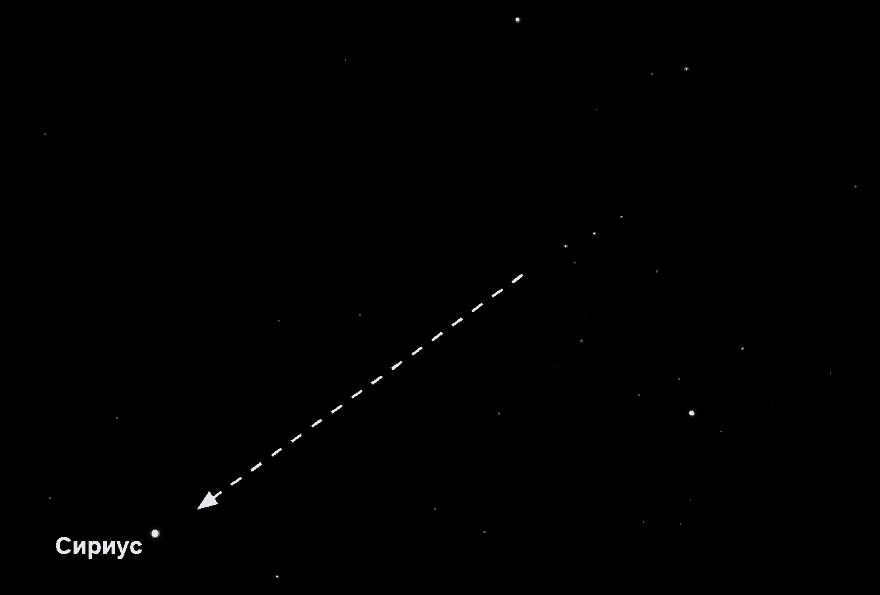
Due to the phenomenon of precession, the star Alpha Canis Majoris, also known as Sirius, will gradually shift southward and become invisible from most locations in Northern and Central Europe by the year 9000. Conversely, in 14000, the star Vega will take on the position of Polaris.
To locate Sirius, one can use the stars that make up the belt of the constellation Orion, namely Alnilam, Alnitak, and Mintaka. For observers in northern latitudes, Sirius can be found in the southeastern, southern, and southwestern skies during the winter season. In the eastern direction, it can be spotted before dawn in late summer.
- Sirius is considered the alpha star of the constellation Canis Major, also known as the Big Dog.
- Constellation: Canis Major (Big Dog)
- Coordinates: 06h 45m 08.9173s (right ascension), -16° 42′ 58.017″ (declination)
- Distance from Earth: 8.6 light-years
- Orbital period: 50,090 years
This is not the most luminous celestial body that can be observed in the nocturnal firmament from the planet Earth. In addition to the Sun and Moon (which are, respectively, more prominent and radiant), Venus and Jupiter radiate more brilliantly than Sirius. The same holds true for Mercury and Mars, depending on their orbital positions in relation to our planet. However, amongst all the genuine stars (excluding the Sun), Sirius occupies the highest position on the brightness scale. It emits light nearly twice as intensely as the second most brilliant star, Canopus, which is actually several times more luminous than Sirius but is situated at a greater distance from our planet.
Two enigmas of Sirius

There are still two unsolved mysteries connected to Sirius that continue to captivate the curiosity of many. The first mystery revolves around the references to Sirius made by ancient authors like Seneca, the Roman philosopher from the 1st century AD, and Claudius Ptolemy, the creator of the geocentric system in the 2nd century AD. These ancient scholars considered Sirius to be a red star, contrasting with our modern understanding of it as a blue star. In Ptolemy’s renowned work, the Almagest, which compiled astronomical knowledge from the ancient world, Sirius is listed as a red star alongside other red stars like Antares, Betelgeuse, and Arthur. Seneca even described Sirius as “deeper red than Mars”.
There is a new enigma surrounding Sirius that has come to light. The Dogon tribe, residing in the Niger River valley in the state of Mali, holds a secretive understanding of Sirius and its counterpart. In the 1940s, French anthropologists Marcel Griaule and Germaine Dieterlen conducted a thorough examination of this tribe. In 1950, they released a research paper discussing the Dogon’s belief in the Sirius system, proposing that the Dogon possessed inexplicable knowledge regarding Sirius’ companion.
As per the Dogon people, this particular star, which cannot be seen with the naked eye, was referred to as “the star with the greatest mass” and “the star with the smallest size.” It doesn’t require much imagination to identify this description as relating to a white dwarf. The Dogon tribe also possessed knowledge about the period of the satellite’s orbit around Sirius, which was said to be 50 years. However, how could an African tribe, who had never been in contact with Europeans before, obtain information about Sirius’ satellite?! The Dogon themselves speak of the legendary heroes known as the Nommu, who they consider to be their mentors and whose residence they believe is in the Sirius system. According to the priests, the Nommu bear a resemblance to fish and are truly the “rulers of water.”
Confirmation of the existence of aliens can only come from the discovery of the three stars of Sirius. However, so far, no evidence of such a discovery has been found in the vastness of space. Therefore, it is necessary to exercise patience and await the verdict of official science, which will either completely debunk or confirm the presence of an invisible celestial body in our current era, along with its captivating bluish-white beauty.
The enigmatic connection between the Dogons and Sirius continues to captivate our interest. Thanks to the diligent work of French ethnographer Marcel Griaule, humanity has been presented with yet another unsolved mystery that remains elusive to modern scientific understanding. We can only bide our time until the moment arrives to unravel all the “ands” and unveil the mysterious curtain that has enveloped the African people for nearly 80 years, keeping them largely isolated from the outside world.
Age and Fascinating Details
The age of the star Sirius and the constellation it resides in is estimated to be relatively young, around 200-300 million years old. Originally, this stellar system consisted of two luminous blue and white celestial bodies, which would have been easily visible from Earth.
The first star in the system had a mass twice that of our Sun, while the second star had a mass five times greater. Eventually, the heavier star went through a gradual process of burning out and transformed into a red giant. However, during this transformation, its outer layer shed off and formed a white dwarf, representing the fourth stage of stellar evolution. Currently, Sirius B, the white dwarf, has a mass slightly smaller than that of the Sun.
Sumero-Akkadian astronomers referred to this celestial object as the deity Ninurta and gave it the name Arrow. The inscription on the Tiglathpalasar monument signifies the beginning of dawn. During the Middle Assyrian period, it represented the middle of winter. Various cultures and tribes conducted festivities to honor their gods.
The current name is derived from the Greek language. In the past, this star was known as the dog because it was believed to be a dog. According to Greek mythology, Sirius was the dog Icarus or Orion. The Greeks associated this star with scorching heat. The poet Aratus mentioned that it was named after its dazzling radiance.
There is a fascinating tale linked to Sirius. Ancient texts depict it as a crimson entity, although it currently appears as a white star with a bluish hue. Ptolemy and Seneca firmly believed that this celestial body emitted a vivid red glow. Their historical records provide detailed descriptions of it. Moreover, similar allusions can be found in the folklore of various cultures.
Sirius B possesses an immensely powerful gravitational force. It is approximately 350,000 times stronger than that of our planet. To illustrate, if we were to place a regular cube of refined sugar on this celestial body, its weight would equal around 1,000 kilograms on Earth.
The brightest star in the sky is Sirius
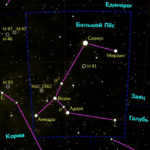
Sirius, the brightest star in the constellation of Canis Major and in the entire night sky, has an apparent magnitude of -1.47 meters. In the Winter Triangle, which also includes the bright stars Betelgeuse and Procyon, Sirius is considered the apex. It is even brighter than Alpha Centauri, the closest star to the Sun, as well as supergiants like Canopus, Rigel, and Betelgeuse. With the naked eye and during the day, Sirius can be seen by knowing its precise coordinates in the sky.
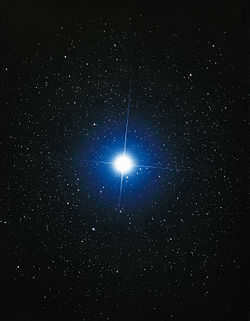
Sirius (Latin. Sirius ), also known as α of the Big Dog, is the most brilliant star in the nighttime sky. This celestial body can be observed from all regions of the Earth except for the northernmost areas. Situated at a distance of 8.6 light-years from our solar system, Sirius is one of the closest stars in proximity to us. It belongs to the main-sequence star category with a spectral class A1.
In 1844, F. Bessel proposed the idea that Sirius is actually a binary star system. Then, in 1862, A. Clarke made the groundbreaking discovery of a companion star known as Sirius B (often referred to as Sirius-B). The main, visible star in the system is commonly referred to as Sirius A. These two stars orbit around a central point of mass, maintaining a distance of approximately 20 astronomical units with a rotation period of roughly 50 years. Excitingly, in 1915, astronomers at Mount Wilson Observatory determined that Sirius B is a white dwarf, making it the first ever white dwarf to be found. Intriguingly, this discovery also suggests that Sirius B was once much more massive than Sirius A, as it has already evolved beyond the main sequence stage.
Historical Background
 |   |
Many ancient civilizations placed great importance on the star known as Sirius. The people living along the Nile River worshipped it long before the establishment of Rome. Through careful observation of the heliacal rising of Sirius, Egyptian priests were able to accurately predict the start of the Nile’s annual flooding. In Ancient Egypt, the calendar year was defined as the time between two consecutive heliacal risings of Sirius.
In ancient Sumerian-Akkadian astronomy, the star was known as the Arrow and was associated with the deity Ninurta. [10] The Tiglathpalasar I monument inscription (11th century BC) states: “During the days of cold, frost, and ice, when the star Arrow appears, it shines fiery red like copper,” describing the acronical rising of Sirius, which occurred in the middle of winter during the Middle and New Assyrian periods. [11]
The modern name Sirius originates from the Latin transcription Sirius, derived from the Greek Σείριος, meaning “bright” or “brilliant.” Throughout history, Sirius has been referred to as the Dog Star, along with Procyon. Procyon and Sirius have long been regarded as the two “dog” stars. [12]
According to Greek mythology, Sirius, also known as Orion’s Dog or Icaria, was considered a prominent star. In Homer’s Iliad (XXII 30), Sirius is mentioned as “Orion’s Dog.” The Greeks also associated Sirius with the intense summer heat, as its name originates from a word meaning “hot day.” According to Aratus, a Greek poet from the third century BC, Sirius earned its name due to its incredibly bright and dazzling luster.
In Latin, Sirius is referred to as “Canicula,” which translates to “little dog.” During the hottest period of summer, when Sirius appeared in the morning sky, the Roman Senate declared days of rest, giving rise to the term “vacation.”
There is a mysterious tale tied to Sirius. Ancient manuscripts depict Sirius as a crimson star, even though today it shines with a bluish-white hue. The renowned Roman philosopher Seneca and the esteemed pioneer of the celestial system, Claudius Ptolemy, both regarded Sirius as a vivid red star rather than blue. Seneca argued that “the sky exhibits an array of colors: the Dog appears bright red, Mars appears fainter, and Jupiter emits pure light without any color.” [15] Ptolemy described Sirius as “the reddest, brightest star among all the fixed stars in the constellation figure known as the Dog.” [16] References to the red Sirius can also be found in the folklore of various other civilizations.
In Chinese astronomy, the star was known as Lan or Tianlan. Sima Qian stated that when Venus is white, it resembles Lan (Sirius), and when it is red, it resembles Xin (Antares). He also mentioned that when the beams of light from Sirius change color, there is an increase in thievery and robbery on Earth. However, Sima Qian acknowledged that stars frequently change their color, so we should approach his statements with caution.
Sirius was among the initial trio of stars to be observed with their own motion. Edmond Halley discovered this motion in 1718 while comparing historical star charts with those from the 18th century, specifically in the cases of Sirius, Aldebaran, and Arcturus. [9] It is worth noting that although these three stars do not possess the highest velocity in terms of their own motion, Alpha Centauri was not visible from Europe due to its southern declination, and Barnard’s star had not yet been detected during Halley’s era due to its relatively low apparent luminosity.
The Uncovering of Sirius B
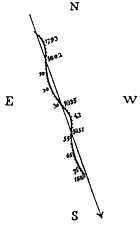
The famous German astronomer and mathematician Friedrich Bessel, who served as the director of the Königsberg Observatory, made an interesting discovery in 1844. He observed that the path of Sirius, a star in the night sky, occasionally veers off course in a subtle manner. When mapped onto the celestial sphere, this deviation appears as a unique wave-like curve. It is important to note that the proper motion of Sirius is quite significant, measuring 1.3 angular seconds per year, which allowed Bessel to observe these deviations within a relatively short period of time.
However, after 22 years, in January 1862, Bessel’s assumption was brilliantly validated. During the examination of an 18-inch (46-centimeter) refractor, American astronomer Alvan Graham Clark stumbled upon a small star in the vicinity of Sirius, which later exhibited orbital motion in accordance with Bessel’s calculations. This marked a significant triumph for “gravitational astronomy”, with its importance being on par with the discovery of Neptune. [14]
Sirius B possesses an apparent luminosity of 8.4 m, and when it is farthest from Sirius A (at 11 angular seconds), it can also be observed using a small telescope. However, it is challenging to observe when it is near Sirius A. This star holds the distinction of being the first white dwarf ever discovered, as well as one of the most massive white dwarfs found to date. [14]
Sirius: Location and Optimal Observing Conditions
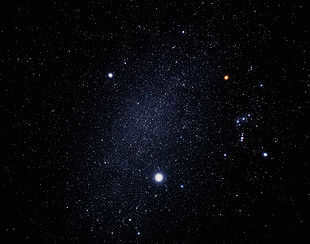
The star Sirius, along with the constellation of Orion and the star Procyon, can be seen in the night sky. If you look between Sirius and Procyon, you can even spot a section of the Milky Way.
Sirius is located in the southern hemisphere, but its declination is small enough to be visible up to 74°N. This means that even in northern Russian cities like Murmansk, Verkhoyansk, and Norilsk, Sirius can be observed. In fact, it rises high enough above the horizon to be visible in Petrozavodsk.
In the middle latitudes of Russia, Sirius can be seen in the southern sky during the fall (near morning), winter (from sunrise to sunset), and spring (for some time after sunset).
Sirius is the Earth’s sixth brightest object in the sky. It is only outshone by the Sun, the Moon, and the planets Venus, Jupiter, and Mars when it is at its best visibility (see also: List of the brightest stars).
Orion’s belt is the main point of reference for observing Sirius. By drawing a straight line through the belt, one can locate Sirius to the southeast and Aldebaran to the northwest. There is no mistaking the two, as Sirius is significantly brighter than Aldebaran. [14]
If one knows the cardinal directions, it is also possible to find Sirius using other stars: it is southwest of the bright star Procyon, about 35 degrees north of Canopus, about 30 degrees south of Alchena (γ Gemini), or 15 degrees east of Arneb (α Hare). [14]
Key features of the celestial body
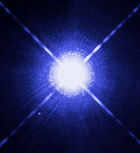
Sirius is classified as the brightest star in the constellation known as the Big Dog and also holds the title of being the brightest star in the entire night sky. In the Northern Hemisphere, Sirius can be observed as the highest point of the Winter Triangle, with the other two points being occupied by the prominent stars Betelgeuse and Procyon. Remarkably, Sirius shines brighter than the nearest star to our Sun, Alpha Centauri, as well as other powerful supergiants like Canopus, Rigel, and Betelgeuse. If one knows the precise coordinates of Sirius in the celestial sphere, it is even possible to spot it during daylight hours without the aid of a telescope. However, optimal viewing conditions necessitate a clear sky and a low Sun position just above the horizon. The star system closest to Sirius is Procyon, which lies at a distance of 5.24 light-years (or approximately 1.61 parsecs).
Sirius A and B, two stars that are relatively close to the Sun, are situated at a distance of 8.6 light-years (2.6 pc). In terms of proximity to Earth, Sirius is ranked seventh among the ten brightest stars visible to us, with only Alpha Centauri shining brighter. Despite not having a particularly high luminosity, Sirius appears bright to us because of its close proximity. If Sirius were located 10 pc away from the Sun, it would have an apparent luminosity of 1.8 m, equivalent to the brightest star in the Big Dipper.
Currently, Sirius is moving towards our Solar System at a speed of 7.6 km/s [1]. As a result, its apparent brightness will gradually increase over time.
Sirius system
The Sirius system is composed of a double star, with Sirius A being a star of spectral class A1 and Sirius B being a white dwarf. These two stars revolve around a center of mass with a period of approximately 50 years. The average distance between Sirius A and Sirius B is about 20 astronomical units (a.u.), which is similar to the distance between the Sun and Uranus. The system is estimated to be between 225 and 250 million years old [24]. Observations from space observatories have shown infrared emission from the Sirius system, which is higher than expected. This could suggest the presence of dust in the system [25].
Sirius A has a mass of around 2 solar masses. Interferometry measurements have determined the angular diameter of the star to be 0.005936″, which corresponds to a linear size of 1.7 times that of the Sun. The rotation velocity of Sirius A around its axis is relatively low at 16 kilometers per second, resulting in its nearly spherical shape [26].
Sirius B is an incredibly massive white dwarf, with a mass of approximately 1 solar mass. Most white dwarfs have a mass of only about 0.6-0.7 solar masses[27], making Sirius B one of the largest white dwarfs known. Despite its hefty mass, Sirius B is incredibly compact, with a volume that is over a million times smaller than that of the Sun. Its size can be compared to that of a small globe. Before reaching its current state as a white dwarf, Sirius B went through several stages of stellar evolution, including the main-sequence stage and the red giant stage. It is estimated that the shedding of the outer shells of Sirius B occurred approximately 120 million years ago. During its main-sequence stage, the star had a mass of 5 solar masses and belonged to the spectral class B4 or B5. The spectrum of Sirius B indicates a high concentration of hydrogen[6].
While going through the red giant phase, it is believed that Sirius B has likely infused metals into the star Sirius A. The spectrum of Sirius A demonstrates a significant amount of metals, such as the iron concentration in Sirius A’s atmosphere being 316% of the solar concentration. Additionally, the spectrum indicates the existence of other elements that are heavier than helium. [6]
Sirius supergroup
For a period of time, Sirius was regarded as one of the stars belonging to the moving group of the Big Dipper. This particular group consists of 220 stars that share the same age and exhibit similar motion in space. Initially, the group was a dispersed star cluster, but it has since disintegrated and lost its gravitational cohesion. [28] As a result, the majority of the stars found in the Big Dipper asterism are no longer considered part of this cluster. However, subsequent research has disproven this belief – Sirius is actually much younger than the cluster and cannot be considered its representative. [29]
Simultaneously, researchers proposed that Sirius, along with β Ascendant, Gemma (α of the Northern Crown), β Chalice, Cursa (β Eridanus), and β Serpent, might serve as indicators of the speculative Sirius super cluster. [30] This cluster is among three expansive star clusters (if it does, indeed, exist) positioned within 500 sv years of the Sun. The other clusters of this kind are the Hyades and the Pleiades. [31]
Sirius in various forms of media
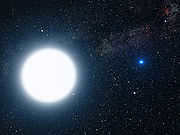
Sirius, being the most luminous star in the celestial sphere, has long captivated the attention of individuals and is frequently referenced in various spheres of human endeavor.
Worldwide Folklore
The Maori folklore pays homage to a revered entity dwelling in the firmament and the highest celestial realm, the tenth heaven, known as Rehua. This celestial being is associated with specific stars, with each nation attributing a different star to this mythical figure. For the Tuhoe people of the North Island of New Zealand, it is Antares, while for many others, it is the brilliant and sagacious Sirius, the most radiant star in the sky. As Rehua resides in the highest celestial realm, he is exempt from the perils of mortality, possessing the ability to resurrect the deceased and heal any ailment. Numerous Maori individuals believed that when they beheld Sirius, they were witnessing Rehua, the most astute being to have ever existed in the cosmos. [32]
Text 1
- In Lucian’s True Stories, the planet Sirius is inhabited by extraordinary creatures known as dog-acorns.
- According to John Dryden’s satirical poem “Avissalom and Achitopel” (1681), the planet Sirius is believed to be the cause of madness.
- Voltaire’s Micromegasse features Sirius as the home of one of its main characters.
- In Isaac Asimov’s series of novels The Founding (1951-1993), the sector of the galactic empire where the Sun and the nearest stars, including Sirius, are located is referred to as the Sirius Sector.
- Frederick Brown’s short story “Nothing Sirius” (1944) revolves around the discovery of a new planet within the Sirius system.
- Larry Niven’s series of short stories “Mastered Space” (1952-1958) introduces the planet Jeans, which is a moon orbiting a gas giant in the Sirius system.
- In Dodie Smith’s 1967 novel “Barking Starlight,” the extraterrestrial canine Sirius, who reigns over the Dog Star, descends upon Earth with the purpose of rescuing stray dogs and transporting them to his home in the Sirius system.
- Ben Bova’s 1969 novel “Foeman, Where Do You Flee?” follows a group of Earth explorers as they embark on a mission to locate and connect with the human population residing in the Sirius system, a planet ravaged by war.
- Frederick Paul’s 1969 novel “The Age of Indecision” depicts a conflict between Earth and an alien species known as the Siriusians, sparked by humanity’s initial encounter with them in the Sirius system.
- In Ben Bova’s 1972 novel “As on the Dark Side,” a scientific expedition sets out to investigate the planets within the Sirius system.
- In the book “Dogsbody (English)” (1975) by D. W. Jones, the character Sirius is falsely accused of murdering another star and is punished by being sent to Earth in the form of a newborn puppy. His mission is to find the alleged weapon he used to commit the crime.
- In “The Silmarillion” (1977) by J. R. R. Tolkien, the star Sirius is referred to as the Elves’ Halloween. [33]
- The “Sirius Cybernetic Corporation” is a fictional entity mentioned in Douglas Adams’ “Hitchhiker’s Guide to the Galaxy” series of novels (1979-1992).
- In Arthur C. Clarke’s Rama series of novels (1989-1993), one of Rama’s ships departs the solar system and travels towards the Sirius system.
- In J.K. Rowling’s Harry Potter series of novels, the character Sirius Black is named after the Dog Star, Sirius. He possesses the ability to transform into a large black dog.
- The book Sleepy Eyes and Froggy Pajamas (1994) by Tom Robbins explores the Dogon mythology related to Sirius, as well as other legends associated with the star.
- In the short story “The Nespeshites” by Eric Frank Russell, there is a mention of “Siran cautious individuals who toil in Earthmen’s mines and then depart in their own helicopters, a technology unknown to their ancestors.”
- Nikolai Andreev’s Star Platoon series of novels is set in the Sirius system, where the main events take place.
Film and television
- The BBC’s science fiction television series, “Doctor Who,” follows the adventures of the Doctor.
- “V,” a television series, features the parent star, Sirius, as the home for “The Visitors.”
- In the television series “Children of the Dog Star” (1984), the star Sirius B is depicted as the source of space probes, one of which is connected to the Dogon legend.
- The television series “Mighty Rangers” (2005), also known as “Power Rangers: S. P. D.,” portrays Sirius as the home star for dog-headed aliens, including Anubis Kruger.
- The music video for the song “You Only Live Once” (2007) shows a space probe targeting Sirius at the beginning.
Comics and animation
The animated film Voice of a Distant Star (Hoshi no koe) depicts a group of Earthlings traveling to Sirius in four spaceships to confront their alien adversaries, known as Tarsians. Additionally, the anime introduces a fictional planet named Agartha, which is located in the Sirius system.
Games
- The game is set in the space-based “Sirius Sector”
- In the computer game Serious Sam, Sirius is depicted as a malevolent star. The player’s army must confront Sirius and his army, which has a detrimental effect on Egyptian civilization.
- In the computer game FreeSpace 2, Sirius is one of three stars controlled by the Neo-Terran Front. It is used to launch attacks on the Alpha Centauri and Deneb star systems in the war against the galactic Terran-Sauan Alliance.
- In the computer game (Earth & Beyond), Sirius is home to a planetary system.
- In the game Mantis: XF 5700 Experimental Fighter, Earth is invaded by dangerous alien insects from the Sirius system.
- In the game, Sirius B is the star that houses the COSA military base.
- In the Traveller game, Sirius is a star without any planets in its system. Sirius A emits a powerful stellar wind.
Music
- The song “Sirius” by the Swedish metal band Sirius B is dedicated to Sirius’ companion star.
- The album “From Mars to Sirius” was released by the French metal band Gojira.
- The instrumental track “Sirius” was performed by rock musician and sound engineer Alan Parsons.
Other
Since the 18th century, seven naval ships from Britain have carried the name “Sirius”. The oldest of these is the British ship Sirius, which arrived in Australia in 1788. The US Navy has also had ships named “Sirius”. Additionally, there was a monoplane airplane model called the Lockheed Sirius.
In 1980, the engine produced by the automobile manufacturer Mitsubishi Motors was named Mitsubishi Sirius.
Furthermore, there is an American satellite radio broadcasting company called “Sirius”, which is named after the star known as “Sirius”. This star is the most powerful of its three satellites.
Fascinating Trivia
- The Quran refers to Allah as the “Lord (Lord) of Sirius.” [34]
- During the Middle Ages, astrologers in Europe and the Arab world attributed magical properties to fifteen selected stars, including Sirius. Each star was associated with a specific stone and plant. Sirius was linked to chrysolite and juniper, and its strongest influence was associated with the planet Venus. [35] The symbol for Sirius was determined by Heinrich Cornelius Agrippa. [36]
- From the perspective of Sirius, the Sun appears as a second magnitude star and is located in the constellation Hercules, near the border with Eagle. [38]
- The flag of Brazil features Sirius and the four bright stars of the Big Dog constellation.
- The Voyager 2 space probe, which was launched in 1977 to explore the gas giants (Jupiter, Saturn, Uranus, and Neptune), is projected to pass by Sirius at a distance of 4.3 light-years in approximately 296,000 years. [39]
Notes


